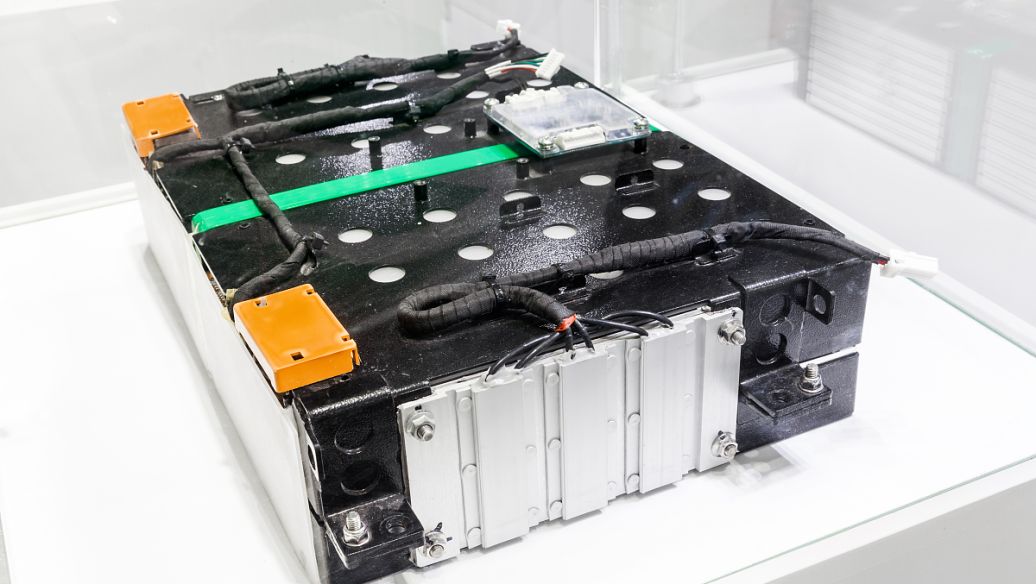Di-tert-butyl Peroxide (DTBP), referred to as DTBP, also known as di tert butyl peroxide, initiator a, vulcanizing agent DTBP, is an organic compound with chemical formula c8h18o2. It is a colorless liquid, miscible with benzene, petroleum ether and other organic solvents, insoluble in water, strong oxidizing, flammable, and an explosive mixture of steam and air. It is relatively stable at room temperature and insensitive to impact. It is one of the most stable organic peroxides. At room temperature, the properties do not change for a long time, and its steam and air form an explosive mixture. Irritating to skin, eyes and respiratory tract. It is mainly used as synthetic resin initiator, photopolymerization sensitizer, rubber vulcanizer, diesel ignition accelerator, and also can be used in organic synthesis.

|
Chemical Formula |
C8H18O2 |
|
Exact Mass |
146 |
|
Molecular Weight |
146 |
|
m/z |
146 (100.0%), 147 (8.7%) |
|
Elemental Analysis |
C, 65.71; H, 12.41; O, 21.88 |
|
|
|

Di-tert-butyl Peroxide (DTBP) is an important organic compound with the chemical formula C8H18O2. It has multiple applications and plays a crucial role in fields such as chemical engineering, materials science, and rubber industry.
Crosslinking agent and polymerization initiator
Crosslinking agent for unsaturated polyester and silicone rubber:
Di tert butyl peroxide is widely used as a crosslinking agent for unsaturated polyester and silicone rubber. Crosslinking refers to the process in which the molecular chains of linear or mildly branched polymer compounds are connected by chemical bonds to form a three-dimensional network structure. In the production process of unsaturated polyester and silicone rubber, DTBP, as a crosslinking agent, can decompose and generate free radicals under high temperature or light conditions, thereby triggering crosslinking reactions between polymer chains, forming a stable three-dimensional network structure, and improving the strength, heat resistance, and chemical corrosion resistance of the material.
Specific example: During the curing process of unsaturated polyester resin, DTBP acts as a crosslinking agent and reacts with unsaturated double bonds in the resin to form a crosslinked network structure. This cross-linking structure endows unsaturated polyester resin products with excellent mechanical properties, heat resistance, and chemical corrosion resistance, and is widely used in fields such as automotive components, ships, and building materials.


Polymerization initiator:
Di tert butyl peroxide is also an efficient polymerization initiator, suitable for polymerization reactions of vinyl and diene monomers. In the polymerization reaction, the free radicals generated by the decomposition of DTBP can trigger a chain polymerization reaction of monomer molecules, forming polymer compounds. This polymerization reaction has a wide range of applications in industrial fields such as plastics, rubber, and synthetic fibers.
Specific example: In the polymerization process of high-pressure polyethylene, DTBP is commonly used as an initiator. Under high pressure and high temperature conditions, DTBP decomposes to produce free radicals, triggering a chain polymerization reaction of ethylene molecules to form polyethylene polymer chains. By controlling the conditions of polymerization reaction and the amount of initiator, polyethylene products with different molecular weights and densities can be prepared to meet different application requirements.
Rubber vulcanizing agent
In the rubber industry, di tert butyl peroxide is used as a vulcanizing agent and is suitable for the vulcanization process of diene rubber (such as natural rubber, styrene butadiene rubber, butadiene rubber, etc.). Vulcanization refers to the process in which rubber molecular chains form a three-dimensional network structure through cross-linking reactions, which can improve the strength, hardness, wear resistance, and aging resistance of rubber products.
Specific example: In the vulcanization process of natural rubber, DTBP, as a vulcanizing agent, can decompose under high temperature conditions to produce free radicals, triggering cross-linking reactions between rubber molecular chains. By controlling the vulcanization temperature, time, and dosage of vulcanizing agent, rubber products with different physical and chemical properties can be prepared. These rubber products are widely used in fields such as tires, conveyor belts, seals, etc.

Polypropylene modifier

In the polypropylene industry, di tert butyl peroxide is used as a molecular weight modifier for high-speed spinning, which can improve the flowability of polypropylene and enable it to be rapidly molded. In addition, DTBP can also be used for modifying polypropylene to improve its processing and physical properties.
Specific example: In the high-speed spinning process of polypropylene, DTBP, as a molecular weight regulator, can control the molecular weight distribution of polypropylene, improve the flowability of the melt, and enable polypropylene fibers to be spun smoothly and have good physical properties. Meanwhile, DTBP can also be used for blending modification of polypropylene, improving its toughness, heat resistance, and weather resistance by blending with other polymers.
Other applications
In addition to the main uses mentioned above, Di-tert-butyl Peroxide (DTBP) also has the following applications:
Additives for diesel and lubricating oil:
DTBP can also be used as an additive for diesel and lubricating oil. It can improve the combustion performance of diesel and the lubrication performance of lubricating oil, enhance the working efficiency and fuel economy of the engine. At the same time, DTBP also has antioxidant and anti rust effects, which can extend the service life of diesel and lubricating oil.
Specific example: Adding an appropriate amount of DTBP to diesel can increase its cetane number, improve its combustion performance, and reduce carbon deposits and smoke emissions during combustion. Adding DTBP to lubricating oil can improve its antioxidant and anti rust properties, prolong the service life of lubricating oil, and reduce the wear and failure rate of mechanical equipment.


Oil and fat food bleach:
In the oil and fat food industry, DTBP can be used as a bleaching agent. It can react with unsaturated bonds in oil, remove pigments and impurities from oil, and improve the transparency and stability of oil. Meanwhile, the bleaching effect of DTBP can also improve the taste and appearance of oily foods.
Specific example: During the refining process of vegetable oil, DTBP serves as a bleaching agent that can remove natural pigments such as chlorophyll and carotenoids from the oil, improving its transparency and color stability. This bleached vegetable oil has better sensory quality and food safety.
Pour point depressant for transformers:
In the power industry, DTBP can be used as a pour point depressant for transformers. It can lower the freezing point of transformer oil, prevent solidification and blockage of transformers under low temperature conditions, and ensure the normal operation of transformers.
Specific example: In cold regions, to prevent transformer oil from solidifying under low temperature conditions, an appropriate amount of DTBP can be added to the transformer oil. DTBP can lower the freezing point of transformer oil, allowing it to maintain good fluidity under low temperature conditions, ensuring the normal operation and power supply safety of transformers.


Reagents in Organic Synthesis:
Di tert butyl peroxide also has a wide range of applications in organic synthesis. It can participate in various organic reactions, such as oxidation reactions, addition reactions, cyclization reactions, etc., as an oxidant, free radical initiator, etc. These reactions have significant implications in fields such as drug synthesis, materials science, and fine chemical preparation.
Specific example: In drug synthesis, DTBP can act as an oxidant to participate in the oxidation reactions of certain compounds, generating oxidation products with pharmacological activity. Meanwhile, it can also act as a free radical initiator to participate in free radical addition reactions and cyclization reactions, constructing complex drug molecular frameworks. These reactions provide new methods and pathways for drug synthesis.

The traditional production process is mostly batch kettle reaction, which takes tert butyl alcohol as raw material and reacts with hydrogen peroxide under the action of sulfuric acid to produce tert butyl hydrogen peroxide, which can be prepared by further reacting with tert butyl alcohol. The existing problems are as follows: in order to be safe, the concentration of hydrogen peroxide is low, the reaction time is long, and there are more waste sulfuric acid wastewater, so the reaction process is not easy to control.
Chinese patent cn101298429a discloses a production method of Di tert butyl peroxide. In this method, a certain concentration of sulfuric acid, hydrogen peroxide and phosphotungstic acid are mixed, and tert butyl alcohol is added to the mixed solution to react to obtain a mixture of tert butyl hydrogen peroxide and di tert butyl hydrogen peroxide. Phosphotungstic acid and stabilizer are added in this method, which increases the cost and increases the difficulty of post-treatment, Moreover, the product is a mixture of tert butyl hydrogen peroxide and di tert butyl peroxide, which requires pressure distillation separation, which increases the treatment cost. In addition, the method uses 35% concentrated sulfuric acid, which increases the waste water after the reaction.
Chinese patent cn107311906a discloses a production method of Di tert butyl peroxide, which changes the three-step method to two-step method, but uses 27.5% hydrogen peroxide, which increases the content of wastewater. In addition, the reaction time is relatively long, which is 4 hours, and it is still generated intermittently.
Chinese patent cn107056670a discloses a preparation method of Di-tert-butyl Peroxide (DTBP). Tert butyl alcohol, hydrogen peroxide and catalyst are introduced into the micro reaction device in a continuous manner, so that the tert butyl alcohol and hydrogen peroxide undergo peroxidation to prepare the logistics containing di tert butyl peroxide, and then the logistics containing di tert butyl peroxide is extracted from the micro reaction device, separated, washed Dry to obtain Di tert butyl peroxide. The patent only records the conversion of tert butyl alcohol and the purity of Di tert butyl peroxide in the product, but its selectivity is only about 85%.

● it is not recommended to be used in the production of food grade and sanitary material grade products without FDA approval.
● the flash point is only 6 ℃, which is extremely sensitive to static electricity. The energy of 0.1mj is enough to ignite its steam, and it is easy to flash and explode at room temperature; In the environment above 55 ℃, even with nitrogen protection, it can still flash.
● the conductivity is extremely low, and it is easy to accumulate charge during the flow process.
● in 2010, DTBP was classified by the European chemical Administration (ECHA) as a Class 3 gene mutation inducing substance. It cannot be recommended to be used as an additive in the field of food contact and direct contact with human products, and there is a high risk of causing biological toxicity.
Hot Tags: di-tert-butyl peroxide (dtbp) cas 110-05-4, suppliers, manufacturers, factory, wholesale, buy, price, bulk, for sale, 3 Nitrobenzaldehyde 99 , 3 Nitrobenzonitrile, N N N Trimethylethylenediamine, squaric acid treatment, 3 methyl 4 piperidone, 2 5 Dihydroxybenzaldehyde








